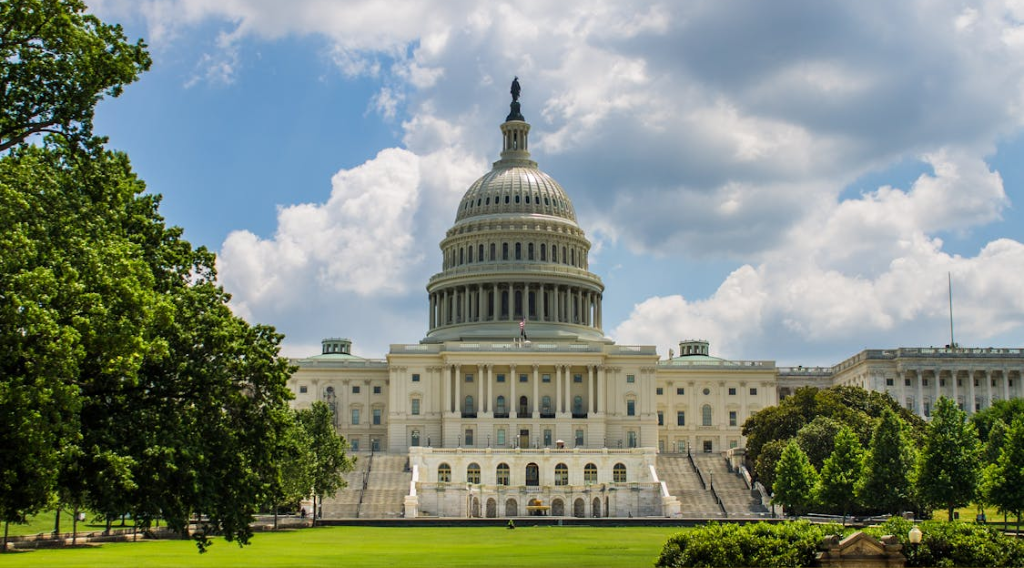 A handful of North Dakota state legislators recently put forth a proposal to tap into the principal of the state’s constitutionally-established Legacy Fund to establish a loan program for infrastructure projects. The plan is expected to come before the 2019 State Legislature and will likely be one of many ideas and proposals that surface in the coming months which aim to utilize either the earnings or a portion of the principal of the Fund.
A handful of North Dakota state legislators recently put forth a proposal to tap into the principal of the state’s constitutionally-established Legacy Fund to establish a loan program for infrastructure projects. The plan is expected to come before the 2019 State Legislature and will likely be one of many ideas and proposals that surface in the coming months which aim to utilize either the earnings or a portion of the principal of the Fund.
The Legacy Fund was established in 2010 through passage of a constitutional measure requiring the deposit of 30 percent of the state’s oil and gas tax revenue into a special constitutional fund. In that vote, North Dakotans formally expressed their commitment to long-term stewardship of revenue generated from a finite natural resource.
According to State Treasurer Kelly Schmidt, deposits into the Legacy Fund have exceeded more than $4.2 billion to date and the Fund balance currently stands at more than $5.4 billion, which includes investment earnings.
The constitutional language allows for the transfer of the fund earnings (estimated at $120 million for the 2017-2019 biennium) to the state’s general fund, and the 2017 State Legislature used those earnings during the last legislative session to shore up state government funding shortfalls. In addition, the State Legislature can appropriate up to 15 percent of the Fund’s principal each biennium with the agreement of two-thirds of each legislative chamber. Both North Dakota Governor Doug Burgum and Senate Majority Leader Rich Wardner (R-Dickinson) have indicated that they intend to tap the Legacy Fund earnings again in the 2019 session, but plan to leave the principal of the Fund untouched.
In 2013, the Great Plains Institute (GPI) convened the Legacy Fund Initiative, a diverse group of North Dakota public, private, community, and nonprofit leaders and citizens who developed a consensus vision and policy recommendations to guide the purposes, governance, investments, and future expenditures of the Legacy Fund.
This bipartisan group of North Dakota leaders envisioned the Legacy Fund as providing “a permanent, sustainable resource for future generations that fosters self-sufficiency, creates opportunity, and enhances quality of life for all citizens.”
Legacy Fund Initiative participants studied national sovereign wealth funds and state-level natural resource funds to gain insight into the purposes and management of various funds. In addition, project participants considered several scenarios for the management of North Dakota’s Legacy Fund in coming decades. The year-long project culminated in a set of recommendations and guiding principles released in November 2014.
Given the considerable changes in oil price, production and revenue projections, and the changes in state law, GPI revised the assumptions in the Legacy Fund investment scenarios for the future and released those findings in 2017. The revised scenarios contemplate the four options for the future expenditure of Fund interest and principal that were used in the 2014 analysis. The results reinforce the original scenario finding in 2014 that reinvestment of earnings into the Legacy Fund in the early years will result in a much greater Fund balance in 2060 and beyond.
After reviewing the scenario results in 2014, the Legacy Fund Initiative participants identified a preferred scenario – “Reinvest, Replace and Spend” – for future management of the Fund. Under that scenario, the revised projections show the Legacy Fund balance growing to $50 billion by 2060 (compared to $93 billion calculated in 2014), while providing North Dakotans important benefits in the near to medium term and fully replacing state oil and gas revenue as production peaks and starts to decline. Under this preferred scenario, the Legislature would spend 25 percent of annual earnings from 2017-2039 and reinvest the remaining 75 percent back into the Legacy Fund until oil production peaks and begins falling. At that point, the Legislature would still spend 25 percent of annual earnings, but use a portion of the remaining 75 percent of earnings to replace diminishing state oil and gas revenue, while reinvesting the rest into the Fund.
Indeed, the Legacy Fund Initiative’s work foreshadowed this most recent proposal from North Dakota legislators, with one crucial difference. Initiative participants specifically recommended that state policymakers consider harnessing the Legacy Fund to make strategic, long-term investments in economic and community infrastructure. However, consistent with their preferred “Reinvest, Replace and Spend” scenario, they proposed limiting infrastructure investment to only a portion of earnings from the Fund, while avoiding use of the Fund’s principal to finance infrastructure projects as now contemplated by some legislators.
Lower oil prices and leveled-off production, coupled with changes to oil tax treatment and other policies, will continue to impact state government revenue flowing into the Legacy Fund, resulting in a significantly lower future Fund balances. Nevertheless, the projections in both cases underscore the power of compounding interest over time and the fact that prudent management by the Legislature today has the potential to double or even triple the balance of the Legacy Fund in the future.
It’s clear that state policy leaders will be contemplating many ideas and proposals to spend both the Legacy Fund earnings and possibly a portion of the principal in the coming months. However, North Dakota’s leaders should be working now to formalize a long-term vision and comprehensive strategy for the Legacy Fund that can provide context and guidance for individual legislative proposals to spend Fund earning and principal. Their decisions will determine the ultimate scale of the Legacy Fund’s asset base and the eventual capacity of this public endowment to make long-term, sustainable investments in North Dakota’s future.



